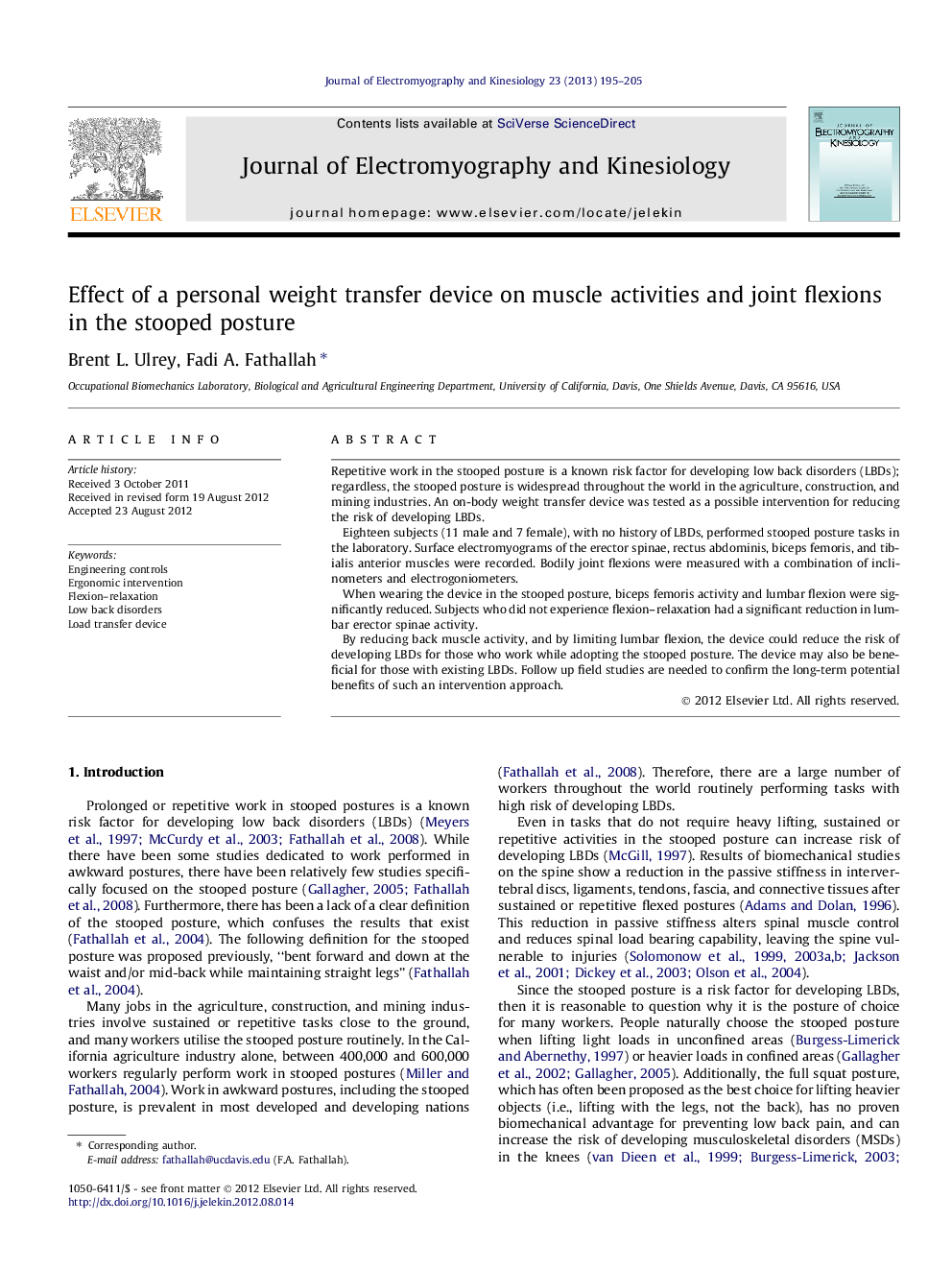| Article ID | Journal | Published Year | Pages | File Type |
|---|---|---|---|---|
| 6210456 | Journal of Electromyography and Kinesiology | 2013 | 11 Pages |
Repetitive work in the stooped posture is a known risk factor for developing low back disorders (LBDs); regardless, the stooped posture is widespread throughout the world in the agriculture, construction, and mining industries. An on-body weight transfer device was tested as a possible intervention for reducing the risk of developing LBDs.Eighteen subjects (11 male and 7 female), with no history of LBDs, performed stooped posture tasks in the laboratory. Surface electromyograms of the erector spinae, rectus abdominis, biceps femoris, and tibialis anterior muscles were recorded. Bodily joint flexions were measured with a combination of inclinometers and electrogoniometers.When wearing the device in the stooped posture, biceps femoris activity and lumbar flexion were significantly reduced. Subjects who did not experience flexion-relaxation had a significant reduction in lumbar erector spinae activity.By reducing back muscle activity, and by limiting lumbar flexion, the device could reduce the risk of developing LBDs for those who work while adopting the stooped posture. The device may also be beneficial for those with existing LBDs. Follow up field studies are needed to confirm the long-term potential benefits of such an intervention approach.
